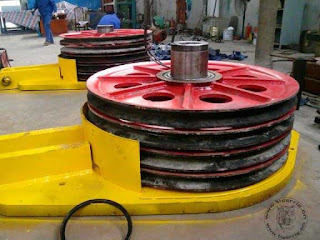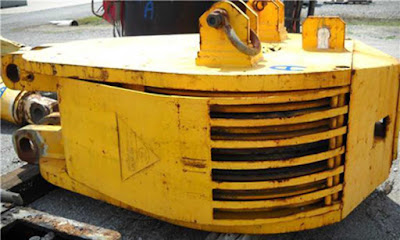The set of sheaves that move up and down in the derrick. The wire rope threaded through them is threaded (or "reeved") back to the stationary crown blocks located on the top of the derrick. This pulley system gives great mechanical advantage to the action of the wire rope drilling line, enabling heavy loads (drillstring, casing and liners) to be lifted out of or lowered into the wellbore. A traveling block is a multisheave pulley used to raise or lower the drill string and casings into a well bore.
The blocks typically consist of four to six individual sheaves over which the steel cables used to suspend the traveling black are passed. The cables are then attached to the
fixed crown block at the top of the derrick, leaving the lower block free to move up and down the cable fall. A shock absorber and crane hook are attached to the bottom of the traveling block and are used to suspend the drill string. These block assemblies are most frequently encountered in the oil drilling applications and are often capable of handling loads in excess of 1,000,000 pounds (454,000 kg).
 |
| Pulley of Travelling Block |
Lowering, lifting, and controlling the drill string in deep well bores generally requires an extraordinarily robust hoist arrangement. These hoists usually consist of a crown block mounted in a fixed position at the top of the well derrick and a traveling block at the bottom of the fall of rope. The travelling block sheaves are flat disks with a deep groove machined around their circumference. When grouped together, as they are in the traveling block, they are collectively referred to as a pulley.

No comments:
Post a Comment